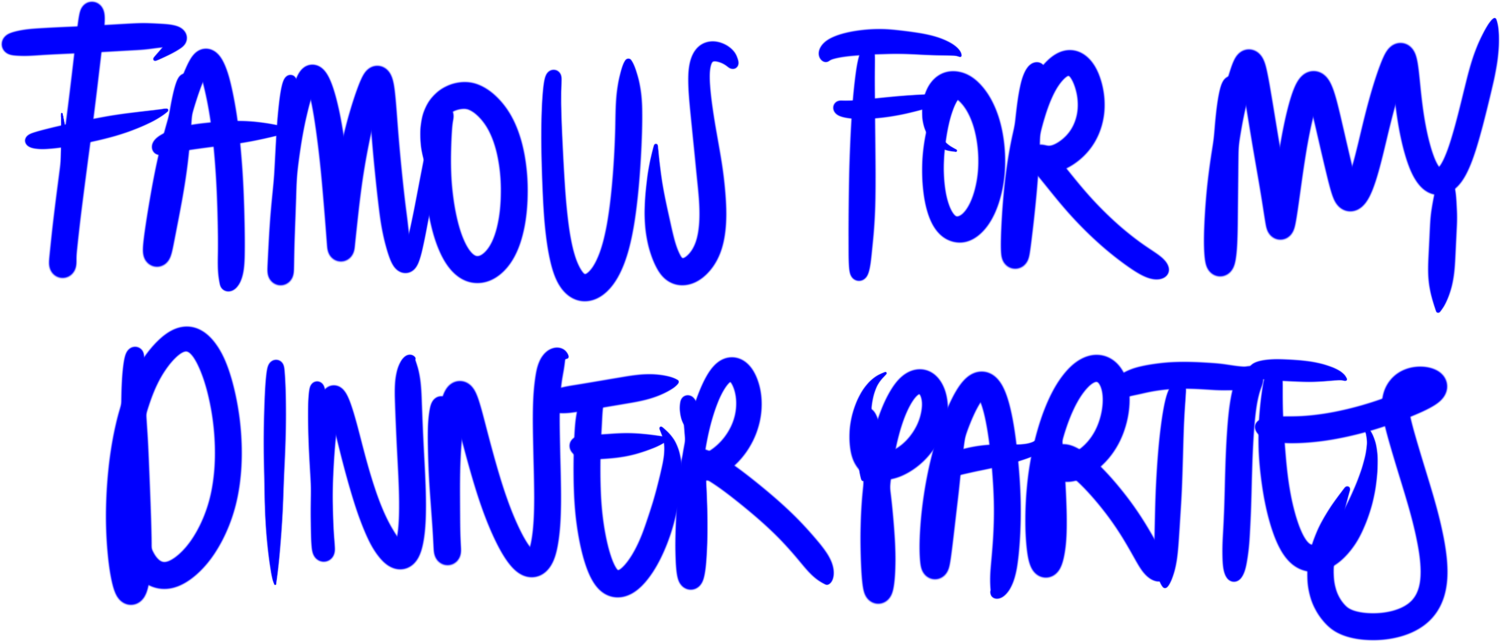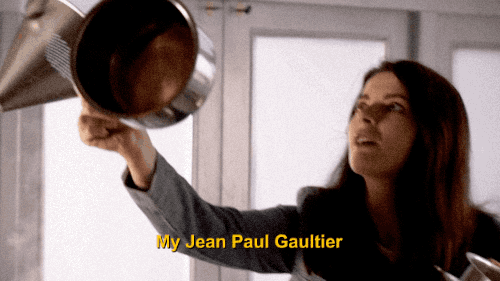RE-WATCH, REVIEW: NIGELLA BITES, SEASON 1, EPISODE 1, 1999.
Nigella Lawson making lemon linguine on Nigella Bites. (via Channel Four)
Just over twenty years ago, Nigella Bites debuted on the British Channel Four. In the year before this first episode launched Nigella Lawson as a television personality, the then-journalist and daughter of Nigel Lawson — Margaret Thatcher’s former right hand — had burst onto the food scene with a surprise hit. In 1998 she launched the first of what would become many cookbooks: How to Eat. It’s a well-known fact that a cover is not the book, but even just with this three-word-title that proudly graced the sleeve of a strangely word-rich cookery book, Nigella turned everything upside down. Here was a cookery book written by someone that did not claim to be an authority in the field of cooking, but in the realm of eating itself. In the preface she writes: “I am not a chef. I am not even a trained or professional cook. My qualification is an eater. I cook what I want to eat — within limits. I have a job — another job, that is, as an ordinary working journalist — and two children, one of whom was born during the writing of this book.”
The tone was set: Apart from that strangely posh-sounding name and the obvious family connection, she seemed to be one us. But what is there to learn from someone who, just like the rest of us, is figuring out stuff as she goes, hasn’t been trained to cook in any professional capacity and admits in the preface of her book to borrowing from other food writers for recipes she calls her own? A whole lot, it turns out, much of which can be discussed by re-watching the first episode of Nigella’s debut TV show — a show that would bring her into more people’s homes, turn her into a household name, and create the circumstances for what she has ultimately become: One of the most influential thinkers about the meaning of food this century has known, and a potent antidote to the intimidation of the Martha Stewart Age.
Queen of frozen peas
Nigella Lawson in her kitchen. (via Channel Four)
A true testimony to the lasting influence Nigella Bites had on the presence of food in popular culture, that is to say in the form of TV cooking shows, is that in some ways, twenty years later, it still feels timely. In each episode of the series, Nigella cooks recipes inspired by a theme — food for rainy days, TV dinners or weekend food —, but for her TV debut Nigella chose to cook fast food. The deliberate change of tone in contrast to the likes of Delia Smith and Martha Stewart, that ruled the airwaves when it came to cooking in the eighties and nineties, is noticeable in the first thirty seconds Nigella ever hit anyone’s screen. Here, there will be no Christmas Puddings that need preparation to start in September, nor will we be shown how to dry lavender from the garden for centerpieces. Instead, we are shown that same working journalist and mother of two from the intro of her book, talking us through an array of recipes so easy to cook, they are sometimes, admittedly, hardly recipes at all. After shopping at a normal inner city supermarket, doing some work on a computer and bathing her small children, she gets down to cooking. The first recipe, for lemon linguine, needs egg yolks separated from the whites: a daunting task to some. Nigella doesn’t opt for “cradling the yolks from one shell into the other”, but instead pours the content of the egg into her hand, letting the whites drip down between her fingers, while warning squeamish people to look away. There are no quantities in these recipes; Nigella isn’t about telling us what to do. Instead, as she points out in the intro of How to Eat, she is here more to “talk you through a recipe, rather than bark out instructions.” That isn’t to say that it’s random, unplanned. In fact, Nigella’s ease and stress-free attitude stem from the fact that she seems to be incredibly sure of herself in the kitchen, which in term stems from the fact that she knows exactly what she wants, and that is to please herself while cooking and eating, as opposed to impressing others. In turn, we are invited to find out, for ourselves, what we want: To add as much cheese to the dish as we like, or, more broadly speaking, to “acquire [our] own individual sense of what food is about.”
“Nigella’s ease serves a purpose. ”
Minutes in, Nigella introduces an ingredient that has become almost exemplary for her style of cooking, that seems to symbolise both her ease and laid-back precision: frozen peas. Fellow food writer Nigel Slater even dubbed her the ‘Queen of Frozen Peas’, a title she now proudly wears. She goes on to explain that frozen peas are not just an easier alternative, or a way to enjoy peas year-round, but a better way to eat peas. “I think the snobbery against them is ridiculous, because unless you’ve got peas in your own garden, there’s no advantage in using fresh, because by the time you buy them, they’ve all gone to starch anyway — so really, I think it’s best to use frozen ones.” A similar logic is applied to deep-freezing marinated meats: Not only is it a time-saver, but a way for the marinade to tenderise the meat even more in the process of thawing. Nothing is random, she doesn’t cut corners. Nigella’s ease serves a purpose.
The freedom of home cooking
Still, Nigella never set out to be a cook associated with quick and easy meals per se. Quick meal cookery books and TV shows became something of a trend in the 2000s — for all the obvious reasons. Jamie Oliver might be the King of it, with his successful series and book Jamie’s 30-Minute Meals followed two years later by the even more impressive Jamie’s 15-Minute Meals. What Nigella shows in the first season of Nigella Bites is something else: That there are dishes for every mood, and that there’s always a reason to cook. Further episodes go on to explore quite the opposite of fast food, leisurely weekend-cooking for example, for days in which you really want to putter around in the kitchen as a form of relaxation.
“Nigella rejected the role of teacher and authority in the field of skill. Instead, she opted to teach us something deeper and more meaningful.”
This sort of holistic approach to life, philosophy, cooking and eating is also what gives the show a sense of timeliness. Part of the food itself, of course, has dated somewhat. This is not to say that they are bad dishes — however, the novelty value with which ingredients like couscous or chickpeas are presented to a western audience has over time eroded. The show is heavy on meat-based dishes, which in times of growing consciousness about climate change might feel out of touch. But then there is Nigella herself, a beacon of light. In the Age of Martha Stewart, cooking on television was presented as a special skill, something to be mastered, with Martha at the top of the pyramid: Queen of all things good. Nigella rejected the role of teacher and authority in the field of skill. Instead, she opted to teach us something deeper and more meaningful. She showed us ways of incorporating cooking and eating into our lives as a form of self-care, by teaching us how to lose the fear and start enjoying. Her kind of cooking is almost a practice in mindfulness: A series of tasks that absorb the mind just enough, but never have to be stressful. Regardless of whether you have guests over or eat a meal alone in front of the television, of whether you have time to putter about or have to “hit the kitchen running.” After all, cooking for yourself or for friends not only doesn’t have to be like restaurant cooking, it shouldn’t be. Quite the opposite: The freedom of home cooking is something Nigella always recognised. Her almost spiritual approach to food seems to be made for the Instagram Age.
A kind kind of cooking
There is a famous idea that the nineteen-eighties were the spiritual successor of the nineteen-sixties — as though the seventies had never happened. Nigella in many ways feels like the spiritual successor of Julia Child, or even further back, the famous American food writer M.F.K. Fisher — as though Martha Stewart and Delia Smith never happened. It should be obvious that the latter two women are incredible in their kind, talented cooks and teachers, but they never tried to make it feel like we could do what they did. We look to Julia Child — at least her television work — and Nigella Lawson for something else. To understand that, yes, food is important, but no, burning something is not the end of the world. That cooking, even for a crowd, can be fun, as long as you don’t take yourself too seriously. That it can be an act of kindness to ourselves, not terror. Nigella Lawson cooks food that feels like we could actually pull it off. In many other ways, the truth is: We will never be her. She is graceful and well-spoken, sloppy but chic. (Learn more about Nigella’s charisma here.)
“She is graceful and well-spoken, sloppy but chic.”
Just last week, Nigella Lawson announced her new book and upcoming TV series on Instagram: COOK EAT REPEAT. Ingredients, Recipes and Stories. Even though all of Nigella’s cookery books since How to Eat have included lovely prose, it seems like this new one will be even more word-rich: “It focuses on the rhythms and rituals of the kitchen, and intertwines recipes with narrative essays about food and stories from a cooking life”, she writes. Chapters will include How to Invite People for Dinner without Hating Them (or Yourself) and A Loving Defense of Brown Food. Her approach to food seems to have stayed the same, but there are signs of the time, too: The new book will include a recipe on A Vegan Feast. Nigella has proven that she is aware of what’s going on in the world of food, while still staying true to what sets her apart. Twenty years after first appearing on television, her star shines as brightly as ever.
Text: Yannic Moeken














